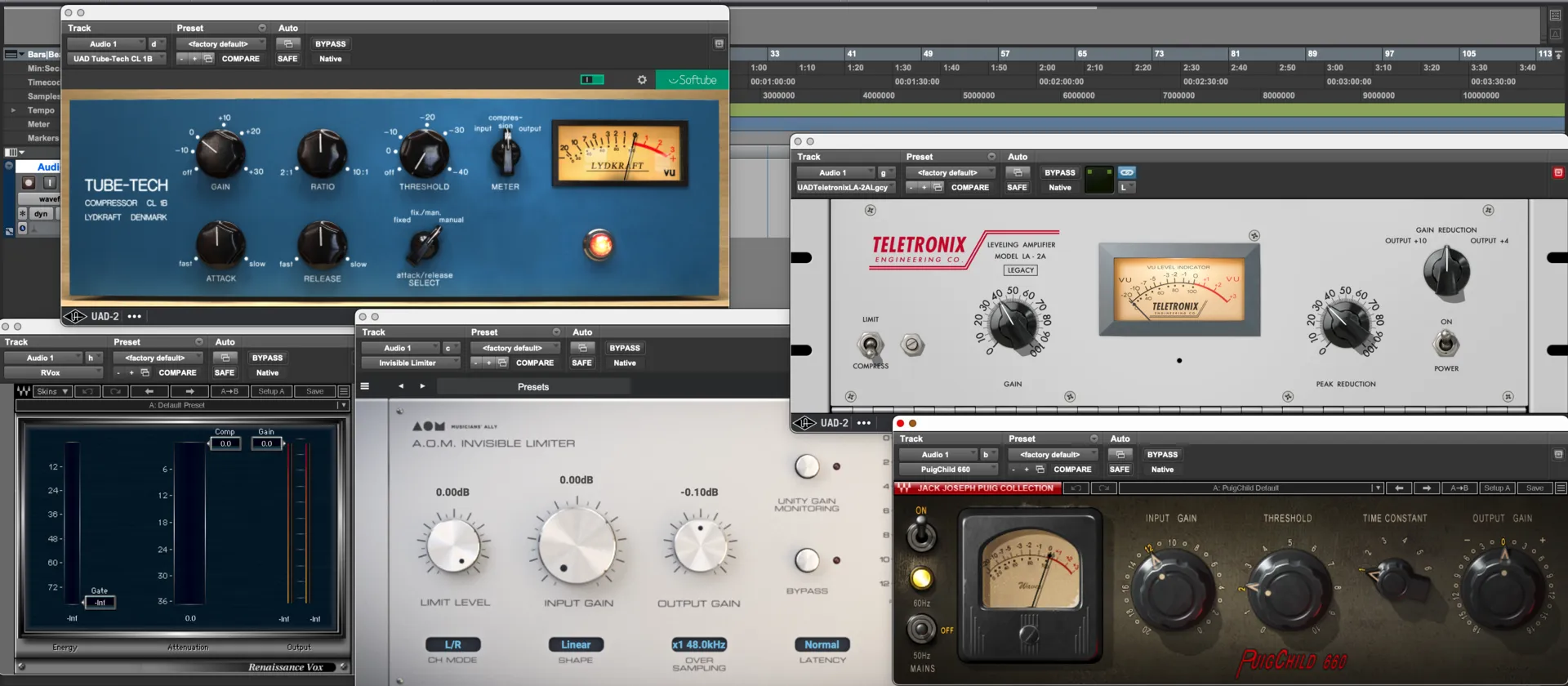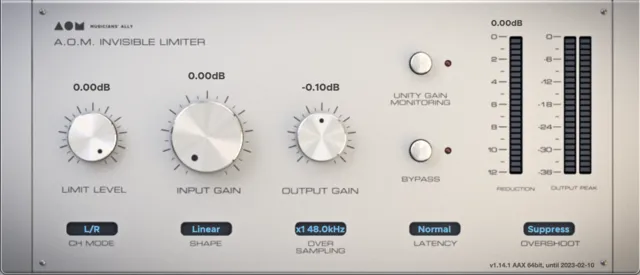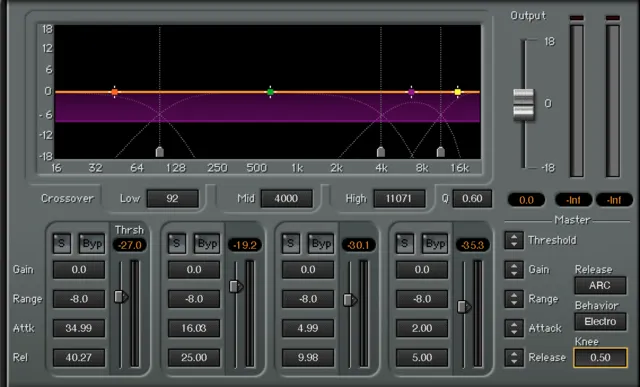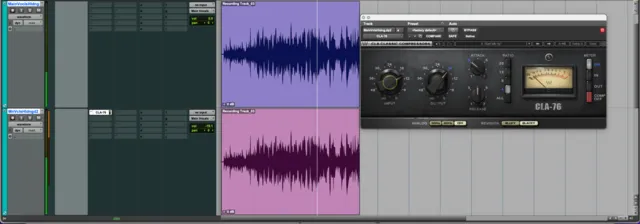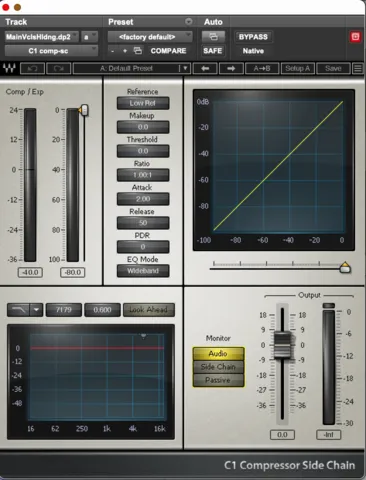Introduction
Compression plays an integral role in music making. Almost every record has some sort of compression on it. And yet these steps are often not utilized properly by the novice producers /sound engineers— often because many think it is complicated. This article takes us through compression basics and reveals incredibly useful, advanced tools you can use on your own mixes.
What is Audio Compression?
In the music industry compression is a term that turns people off, but it is one of the most useful tools for music. Audio compressors help tame the dynamics of an audio signal. Compressors are automatic volume controls that turns down an audio signal when it reaches the loudness threshold. In more simple terms compression reduces the distance between the loudest and quietest parts of an audio signal.
It helps to keep audio signals more consistent in which it makes it sound smooth and allows the sound to sit better in the mix. If you're new to music production, compression is intimidating. This article is going to go over everything so you can feel more comfortable applying it in your music production.
Why Do We Use Compression In Music?
Sometimes compression techniques are very subtle but we can only give an example to explain the whole thing clearly here. Imagine you have a vocal, and during the chorus the singer becomes louder more frequently, causing too big of a difference in loudness between the verse and chorus, making the song very inconsistent. Compression addresses the issue by taming the vocals.
The screaming vocal levels can be lowered to a similar level to the whispering vocals automatically once it reaches the threshold you set.
You could do this with automating the volume and just turning the vocal down, but it does not sound the same or as smooth.
Spelling this out with a laugh would look like this:
No compression - ahahAHAH
Compression - ahahahah
The compression would keep the same tone and everything, it would just no become louder.
When the last 2 AH's reach the volume threshold the compressor reacts and turns the signal down. This can apply to any instrument or sound. Sometimes when a sound has too big of a dynamic range, it will not fit in the mix as well as a more tamed and compressed signal.
THRESHOLD
As stated above, the compressor's threshold is the level at which the compression will be applied. Once your audio signal reaches the threshold level, your signal gets compressed. You set this level on most compressors and on some it is applied by raising the input gain until your compressor begins to be activate.
The lower the threshold determines how much compression will be applied to your whole signal.
ATTACK
Attack refers to how quickly the compression will be applied AFTER the signal hits the threshold. Attack time is usually measured in ms.
RELEASE
Release is used like attack, but the opposite. Release determines how quickly the signal will go from being compressed, to its original state.
TYPES OF COMPRESSORS
There are a few different types of compressors that all have different sound and different ways to apply compression.
TUBE COMPRESSOR
Tube compressors are an old type of compressor that adds colour, that isn’t obtainable on other types of compressors. A tube compressor will have a slower response rate than other types of compressors.
These compressors are great if you are looking to add colour to your recordings.
OPTICAL COMPRESSOR
Optical compression, or opto compressors, use light sources and optical cells as their primary components. In an optical system, input signal illuminates a light source and the optical cell attenuates it. The stronger the input signal, the higher the brightness of light and the more gain reduction is applied by the cell.
An opto compressor tends to sound smoother than the other different compressors. A common optical compressor would be an LA-2A.
VCA COMPRESSOR
VCA's (voltage-controlled amplifier) is one of the most common compressor types and usually includes the controls you see on a plugin compressor like the attacks, release threshold ratio and even knee. Typically the VCA compressor offers excellent control and predictable sound, with the sounds being clean. VCA compressors are commonly used for mixing and editing because of their transparency and versatility.
VCA are very transparent compressors that are quick and can add punch to your record. Typically buss compressors.
FET COMPRESSOR
FET compressor are some of the most common compressors out there. They do have a tube sound to them but are more quick than the Tube compressors mentioned above. This means they are a great option for keeping your transients in place.
A common FET compressor would be an 1176.
LIMITER
Limiters are a harder form of compression. As mentioned above these compressors have a higher ratio than typical compressors. They can go from 20:1, 100:1 and even ∞:1. You usually use these on mixes and during the mastering stage to really help glue or compress everything together.
MULTIBAND COMPRESSOR
Multi-band compressors are similar to any other audio compressor, as they have the same controls, and apply dynamic range compression. The only difference is you can target specific frequency ranges.
Say you have an electric bass that has a frequency that gets too loud on certain notes, you can use the frequency bands of a multi-band compressor to compress just that frequency range. Anytime that note that has the frequency that gets too loud and reaches past the threshold you set, the gain reduction will only be applied to that frequency range.
Audio Compression Techniques
Here are some additional compression techniques that can be used to apply compression past just applying to individual tracks.
PARALLEL COMPRESSION
Also known as NY Compression, is a compression effect that has a large amount of compression applied to a signal that is then blended back into the original sound. This creates a very thick sound. Usually done on a send or in "Parallel" with the original source.
I tend to use parallel compression on kick drums, bass guitar, snare drum and anything else that can really drive and direct the song.
It is also great to use on mixes and honestly anything else that needs to have some sort of thickness.
SIDECHAIN COMPRESSION
Sidechain compression is a type of compression where the compressor on one instrument is controlled by the volume of another instrument. Say you have 2 instruments that share similar frequency ranges like a bass and a kick. If you have a sidechain compressor on the bass that has a trigger from the kick, compression will be applied to the bass when the kicks level reaches the compressions threshold.
This is a way to make sure that the kick always stays in the mix, even when the bass is playing. It will duck the bass out when the kick hits.
Side chain compression is commonly used in EDM and Dance music to create the pumping effect.
Compression As a Tool Beyond Dynamic Range
Here I am going to give a few examples of when you can use a compressor.
I would suggest using a hardware compressor for any instance you have access to one. Hardware compressors and software compressors can sound different, even with the same compressed signal.
Vocals
I will use vocals as an example, but it can be used on any source.
Vocals are very dynamic in range. Using a compressor to control the loud and quiet parts like mentioned above is a great way to keep your song sounding consistent and making sure they sit well in the mix.
But you can use compressors for more than just dynamic control on any instrument. I will typically use compression to tame the dynamics first, then if I need to smooth the vocals out, bring the vocals forward in a mix, add color or even outline or emphasize moments in the performance with manipulating the attack and release I'll use a compressor.
Here are some tips for compression on vocals:
- The more input gain you add, the more color
- Slow attack and quick release for a thicker vocal
- Slowest attack and quickest release for transients
- Buss compressor with medium attack and release for emphasis or glue
- Quick attack and release for aggression
I also tend to use parallel compression on vocals to really help them sound thicker and sit in the mix better.
You are going to have to use your ears when applying compression so try all the settings out.
Does Compressed Sound Better?
Nowadays people get turned off to songs that have excessive compression. I would agree that too much compression can take the life out of a song and that is the exact opposite of what your goals are as an engineer or music producer. But just because a song has compression doesn't mean it is worse sounding than if it didn't.
You shouldn't be avoiding using compression because people use it as a buzz word to say that the song is not sounding good. I personally think vocals heavily compressed sound way better in a mix than no compression at all. Obviously this depends on the genre, source material and the song, but 9/10 times compression will be used on a mix.
Compressors shouldn't be something you are aiming not to use at all because you heard too much compression is bad. You should be learning how to use compressors and use your ears to determine when and what situation it should be used in.
Before adding an audio compressor, you should always ask yourself why you are reaching for it.
Conclusion
Hopefully this article has helped you better understand how and when to use compression for your recordings.
Compression can be hard to know when to use, especially if you are just starting out. Before you reach for the compressor you should be asking yourself what your goal with it is. Are you using it to tame dynamics? Emphasize moments? Bring something forward in the mix? Is a different tool more aligned with my goal available?
I suggest trying ll these different types of compressors out, even on sounds you wouldn't think to. You can apply buss compressors or even limiters to main vocals. You can multi-band kick and parallel process FX.
Compression is a phenomenal tool when you know how to use it. There is always that "sweet spot" you have to find, and with more use, you will become quicker at finding it.
Sign up for our newsletter, for exclusive mixing & mastering tips!
COPYRIGHT © 2023. All Rights Reserved.

